For chickens, extreme heat is more dangerous than frigid cold weather. Chickens have a core internal temperature of around 106 degrees F, which is higher than mammals. If their core temperature gets above 115 degrees F, they can experience severe illness or death.
Here are 9 ways to keep chickens cool during the summer:
- Provide shade
- Provide fresh, cool water
- Turn on fans
- Reduce feed
- Eliminate corn
- Feed cool fruits and vegetables
- Set-up kiddie pool
- Facilitate dust baths
- Replace coop door with screen door
If you are raising chickens in your backyard, consider implementing the following methods to help keep your chickens cool during the summer, especially if you live in a very hot or humid climate.
While chickens have techniques for cooling themselves in hot weather, it's important to understand that extreme heat, especially if it is prolonged or accompanied by high humidity, can be deadly to chickens.
1. Provide Shade
When chickens have access to shade, they will seek it out when they become too warm. Make sure your chickens have access to shade throughout the day. Keep in mind that as the sun moves throughout the day, so will the shaded areas in your yard.
I have a tarp that attaches to the top of my chicken run. This provides varying amounts of shade throughout the day but it wasn’t giving my chickens enough space as the shaded area was too small for all 10 chickens to congregate. This is when Steven and I created our “expanded run.” The chicken coop is in a corner of our yard where one side is the garage and the other side is the fence. We added some chicken wire to make this area enclosed. There are some leafy bushes along the garage so it provides a cool place for my chickens throughout the day.
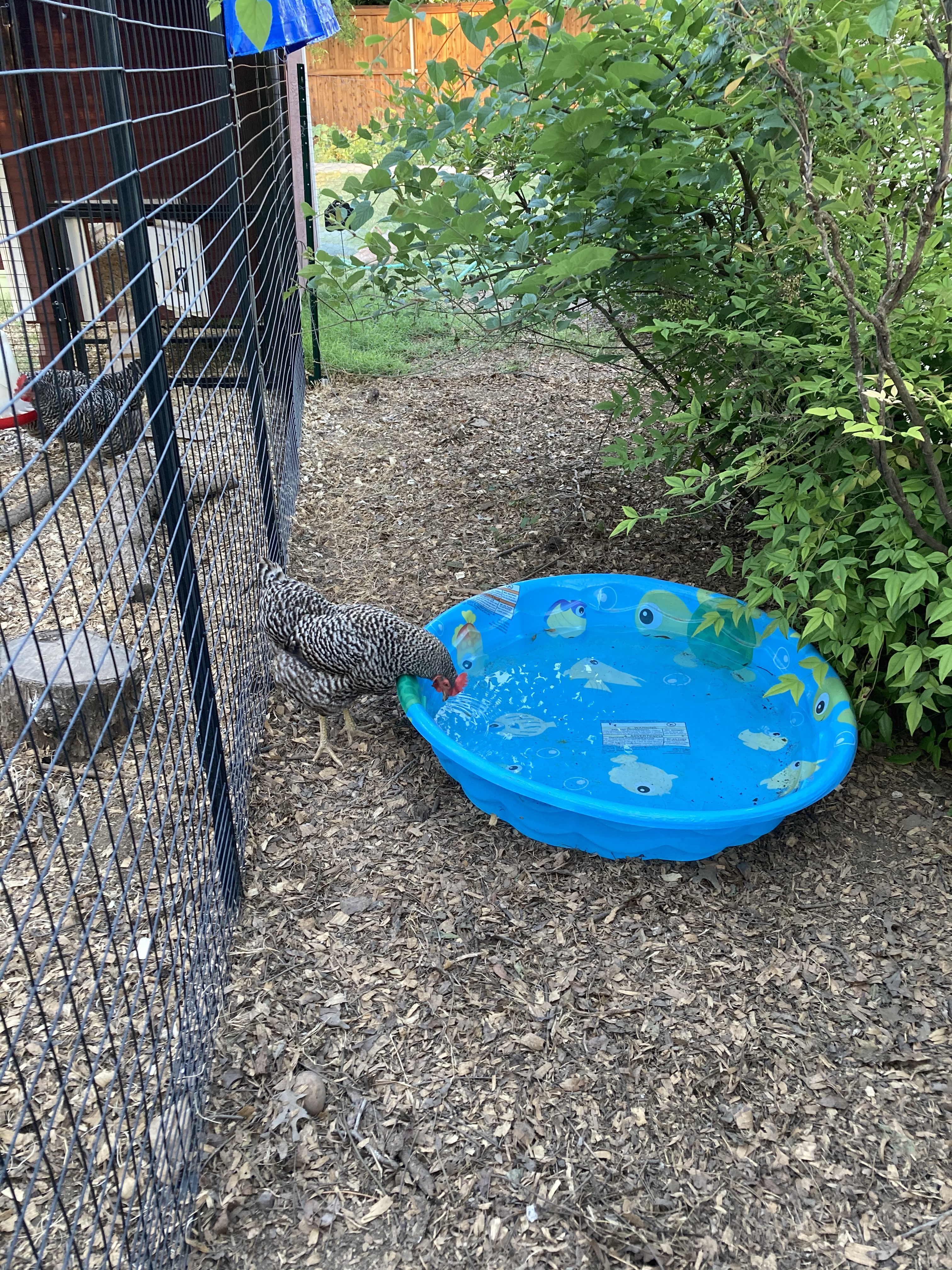
2. Provide Fresh, Cool Water
When the weather is comfortable, a chicken will drink 1 to 2 cups of water per day on average. As the temperature starts to rise, chickens can drink double that amount. If your chickens are older or laying eggs, they can drink even more water. Up to 65% of an egg and more than 50% of a chicken’s body consists of water.
Chickens will drink small amounts of water throughout the day by gathering water in their mouths and lifting their heads upward. They have tongues but they are so little they are not able to effectively push water down a chicken’s throat, so they use gravity in their favor to pull the water down their esophagus.
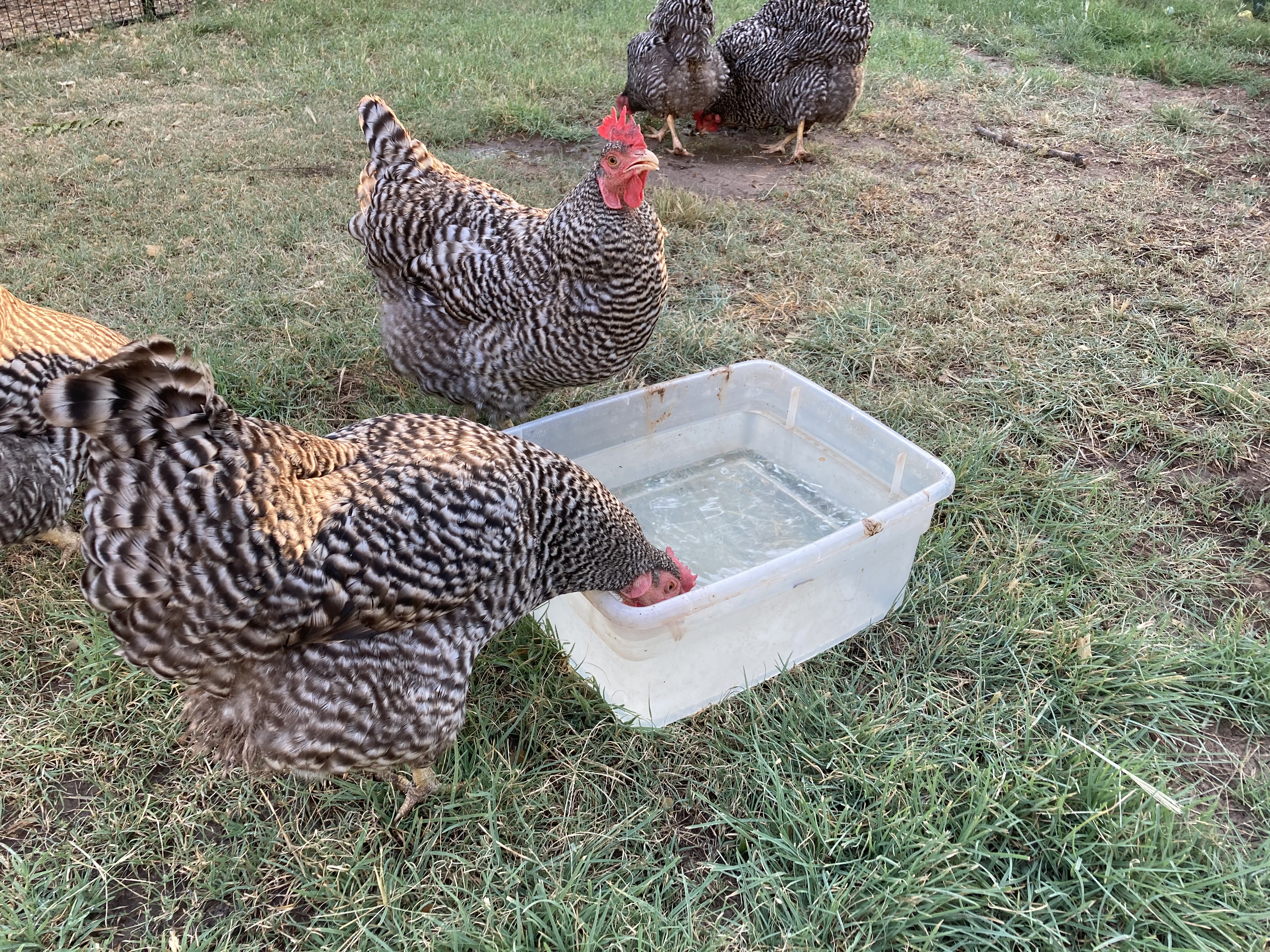
Keep in mind that chickens will not drink water if it is dirty or too warm. Place multiple waterers in your chicken run to make sure that at least one waterer is in the shade at any given time. Providing more than one waterer also ensures that all chickens are able to access the water throughout the day. Some chickens can bully the more submissive chickens in a flock and prevent them from having access to feed or water if there is only one place to eat or drink.
My chickens have three waterers set-up during the summer: the 5 gallon waterer that stays in their coop, the plastic tote inside their run, and a kiddie pool filled half-way with water in their expanded run. This ensures that all my chickens have access to water throughout the day, including any chicken that is in the coop laying eggs.
At all times, but especially in hot weather, it’s important that chickens have continual access to fresh, cool water.
3. Turn on Fans
The most important aspect of any chicken coop is ventilation. This especially applies during hot weather as the inside of a chicken coop can be more than 10 degrees hotter than outside the coop. Place a thermometer inside your chicken coop and also in their run to measure the temperature (you get extra points if you also measure the humidity, which can be just as uncomfortable for chickens at high levels).
When there are either high temperatures, high humidity, or a combination of both, chickens need to have a breeze to help keep them cool. I already explained how chickens will hold out their wings and feathers to allow their skin to cool from a breeze. If you help supplement that breeze by providing a fan, your chickens will love you.
During the summer, I have a box fan sitting on the ground blowing air into the expanded run. The air blows through the leaves of a bush and the chickens love to sit on the ground inches from the fan. I have one girl in particular that has always loved sitting in front of the fan, letting the air blow her feathers.
I have a smaller fan that is set-up to blow air into the chicken coop. My chickens will still lay eggs when it’s hot outside, although production does drop off some. I want to make sure any chicken in the nesting boxes is getting a breeze. The inside of the chicken coop was reaching 100 degrees F last week, but given the fact that it was also 100 degrees outside, that was pretty good since it wasn’t hotter inside the coop than it was outside.

4. Reduce Feed
When the weather is very hot (above 95 degrees F), I will reduce the amount of feed that I give my chickens. As the temperature rises, chickens will eat less and instead focus on drinking water and getting rest. Since they aren’t eating as much I will put out less food to prevent the feed from becoming stale. Grains begin to go stale the moment they are crushed, so feed should be fed to chickens within a month of buying as chickens will stop eating feed that does not taste good to them.
I try to measure out the amount of food I think my chickens will eat in a given day so that there won’t be a lot left over for tomorrow. Next time you have food that has set out overnight, compare its color to fresh feed and you may notice that the old feed has a paler color than the fresh feed.
5. Eliminate Corn
My chickens love to eat scratch that contains seeds and cracked corn as a treat. However, during the summer I feed them sunflower seeds instead because it helps keep them cooler.
Higher levels of energy are required to metabolize and digest corn, which can increase a chicken’s body temperature. Feeding chickens scratch during the winter before bedtime is great way to keep then warm throughout the night. However, during the summer chickens do not need this additional body heat.
You can consider feeding your chickens scratch during the early morning hours before it gets hot, but here in Texas it typically stays hot from May through October, so I eliminate corn-based treats altogether from my chickens’ diet during the summer.
6. Feed Cool Fruits & Vegetables
On hot days, I like to feed my chickens cool fruits and vegetables. When chickens eat, they store food in their crops so that it will be digested later. When you feed them cool food, this will cool off their crop and help cool the rest of their bodies as well. Some people will also place the feed in the freezer for half an hour before feeding it to the chickens.
At our house, Steven will cut a watermelon in half and store it in the refrigerator for a few hours before I take one half out to the chickens. I try to time this at the same time every day so the chickens can look forward to the routine. We will also give them cool iceberg lettuce from the refrigerator and frozen cherries.
In addition to cooling a chicken from the inside, fruits and vegetables provide water to chickens which is helpful during hot weather.
7. Set-up Kiddie Pool
Heat dissipates from a chicken’s legs and feet. This is why breeds of chickens that are suited for colder climates, like Cochins, Brahmas, and Silkies, have feathers on their legs and feet. Breeds that can handle hot weather, like Leghorns, Easter Eggers, Rhode Island Reds, and Barred Plymouth Rocks, will have bare legs with no feathers. Taking a dip in cool water helps lower a chicken’s internal temperature.
I noticed that one of our chickens liked to stand in their plastic tote waterer on hot days. When she got out of the tote, she would start preening herself and was the only chicken that was not panting. I figured that the other chickens could benefit from standing in water on hot days so I bought a kiddie pool.
We have a small kiddie pool set-up in the expanded run for the chickens. They like to drink water from the pool and a couple of the more brave chickens will actually get into the pool. I’m hoping that one day I’ll look outside and see all 10 chickens in the pool! (If that happens, I will absolutely loose my mind at the insane level of cuteness.)
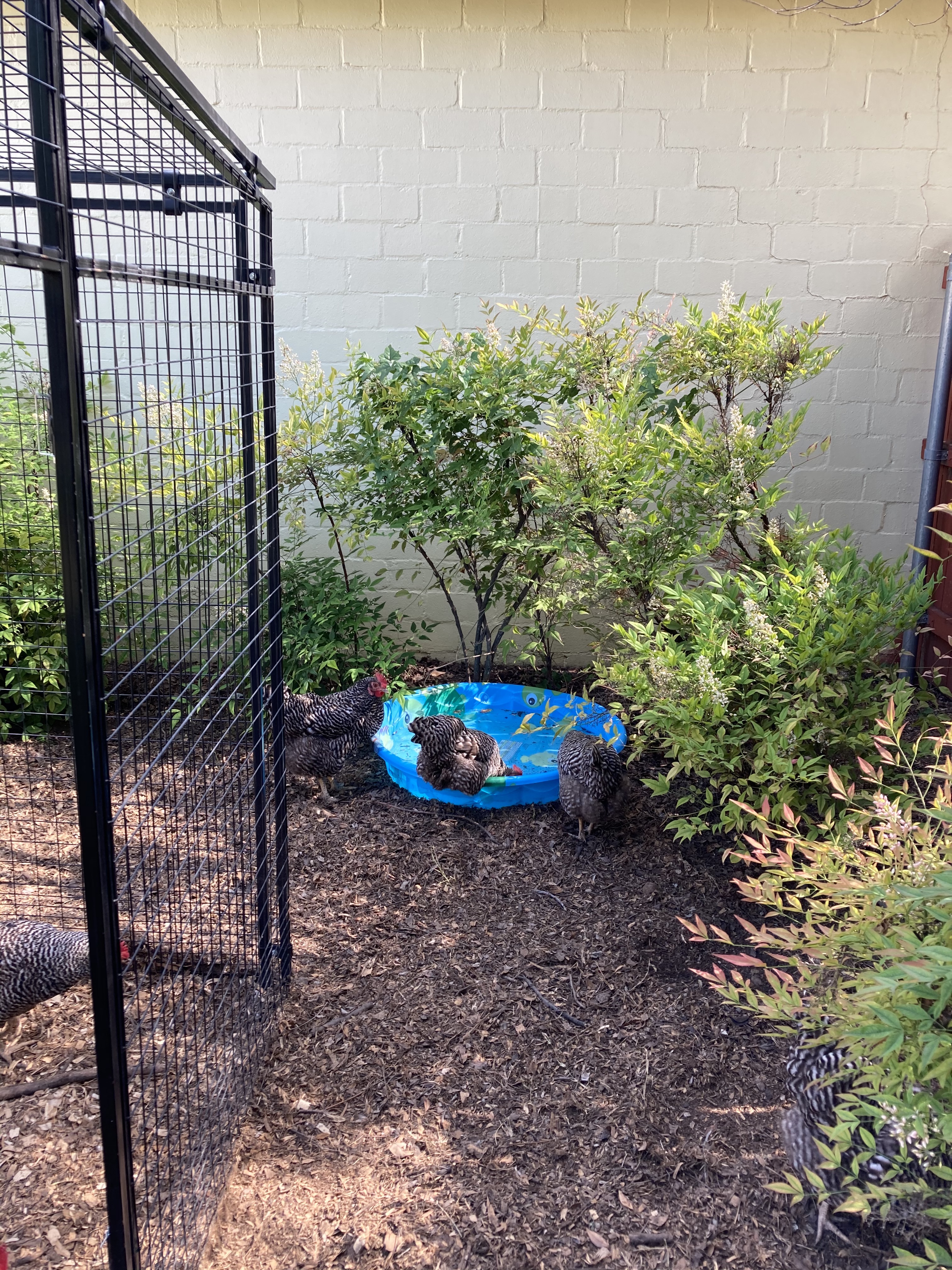
If you notice a chicken seems to be struggling with the heat, it won’t hurt to put the chicken in the pool for a minute. The water should be cool to the touch, but not cold – you don’t want to shock the chicken’s system. When I’ve done this with my chickens, about half of them enjoy it and the other half are just ready to get out of the pool.
8. Facilitate Dust Baths
Chickens will need to continue with their regular grooming during the summer. Make sure you have a shaded area where your chickens can dust bathe. In addition to cleaning their feathers and skin, the coolness of the dirt and ground will help cool off hot chickens. My chickens like to spread a leg or a wing out on extra hot days and stay perfectly still during a dust bath.
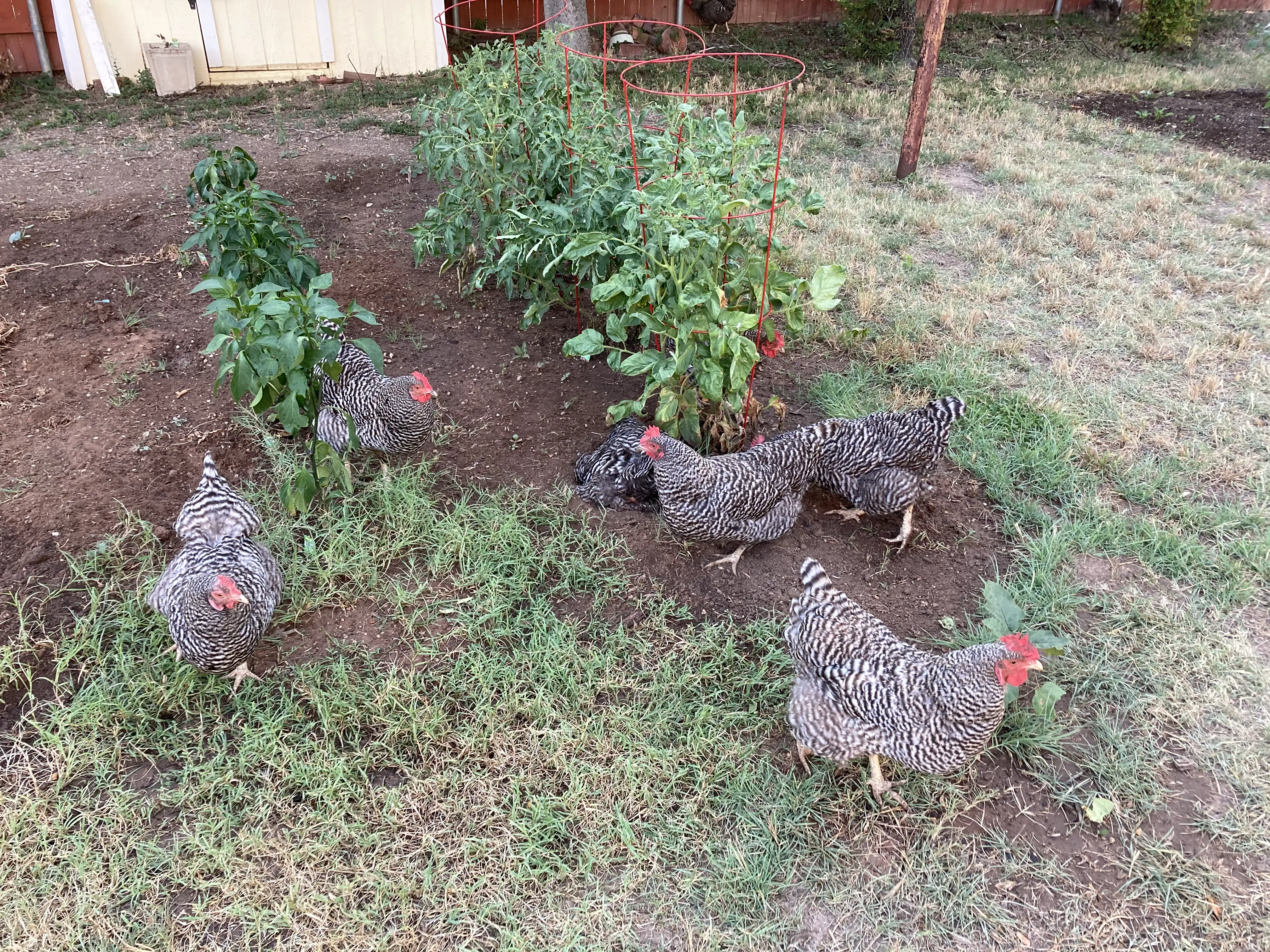
9. Replace Coop Door with a Screen Door
Our chicken coop came with a solid door where we enter the coop (aka the “human door”). During the summer, it can get up to 100 degrees F inside the coop. The chickens were still going inside the coop to lay eggs, but I was concerned about the heat and the stillness in the air inside the coop.
Steven and I decided to replace the human door with a screen door this summer. We used the current door as a pattern and used half inch hardware cloth to make the door predator proof. The coop has much more ventilation now and the chickens seem to enjoy the additional breeze! The highest temperature I have seen in the coop since this modification has been 95 degrees F, which is still hot, but not quite in the triple digits like before.

Depending on your coop construction, you might consider replacing the regular door with a screen door. Just make sure to not use the lightweight mesh screen that typically comes on screen doors or windows. This material is not secure enough and won’t keep out an animal intent on entering the coop. Half inch hardware cloth makes a great screen for the door (and windows): it’s secure, cheap, and can be bought at Lowe’s, Ace Hardware, Tractor Supply, or Walmart.
These methods have worked for me as I’m raising my backyard chickens in West Texas where we regularly get temperatures in triple digits during the summer. Work out a plan before the first heat wave hits so that you can be prepared. The first really hot day of the year is hard on my chickens so I make sure to check on them often. After they have gotten used to the heat (within a few days), then I can get back to checking on them at lunch and again after work.

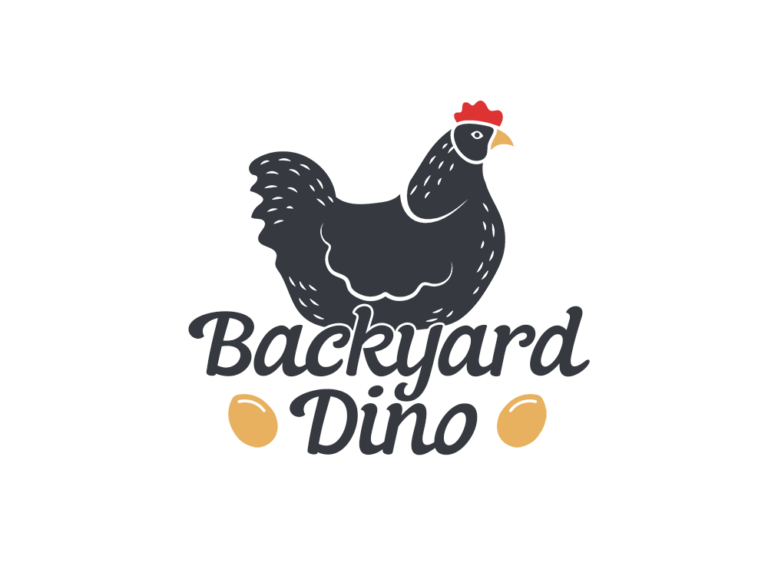
9 comments
[…] lettuce, and tomatoes. If the foods have been in the refrigerator or freezer, this can be a good hot weather treat for your […]
[…] outside the coop, provide their food (and water) outside the coop. This is especially important in hot weather. Just make sure the food doesn’t get wet from rain or a lawn sprinkler as that will cause it […]
[…] their wattle will loose some of its red color and becomes shrunken. Give your chicken some water and shade and their comb should perk back […]
[…] the summer, I cut out scratch grains completely since they require more energy to digest and can raise the internal temperature of the […]
[…] are some more ways to keep chickens cool during the […]
[…] out 9 Ways to Keep Chickens Cool During Summer for more ideas on keeping your flock […]
[…] some water and shade and their comb should perk back up. For more about keeping chickens cool, read 9 Ways to Keep Chickens Cool During the […]
[…] 9 Ways to Keep Chickens Cool During the Summer […]
[…] more ideas, read 9 Ways to Keep Chickens Cool During Summer. I live in West Texas were it gets HOT during the summer and my chickens approve of these methods […]
Comments are closed.